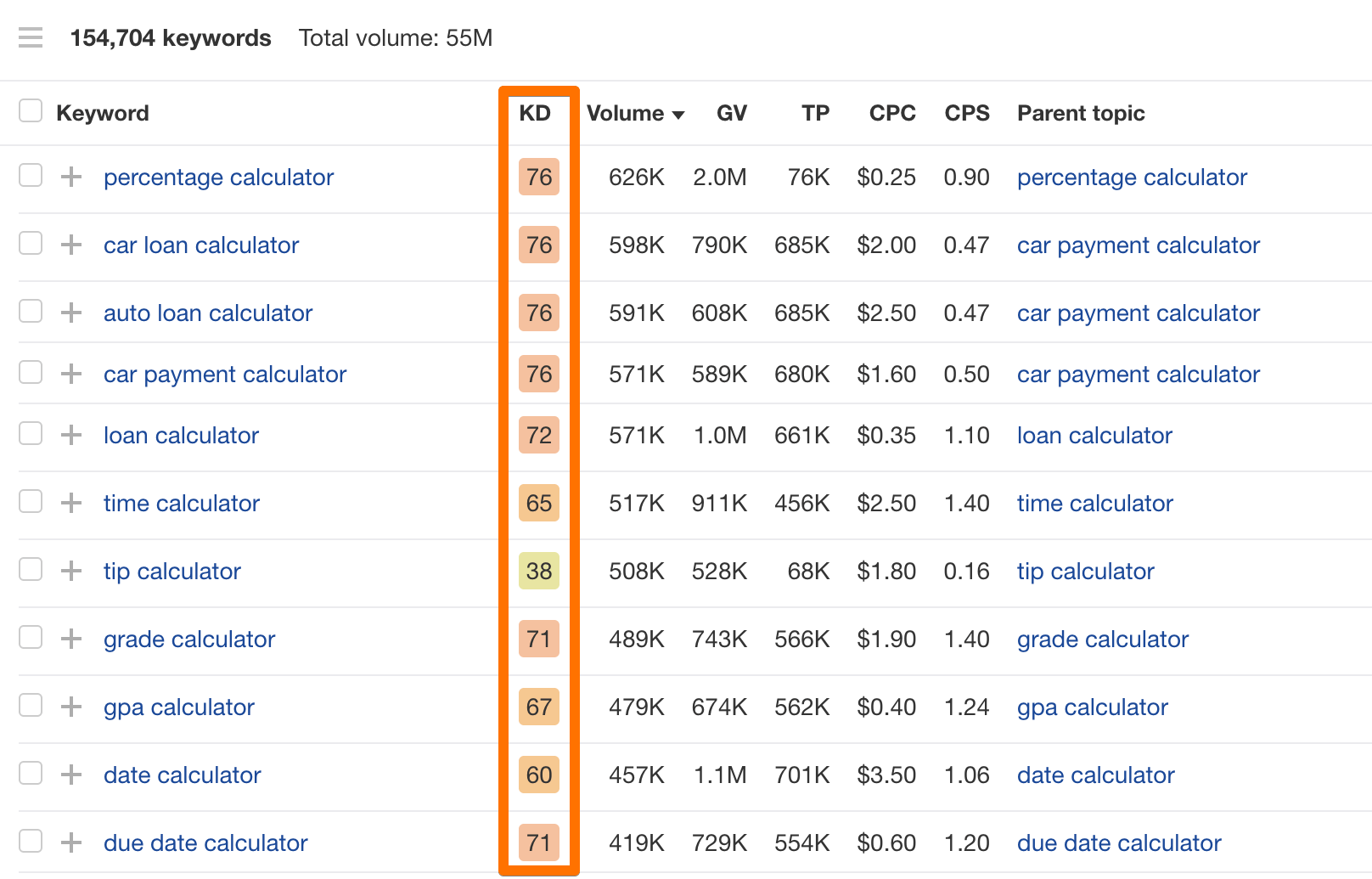Keyword Difficulty
What is Keyword Difficulty?
Keyword difficulty (KD) is a metric used in SEO to estimate how difficult it would be to rank on the first page of Google for a given keyword.
Keyword difficulty is always only an estimation because Google does not disclose all its ranking factors. That is why different SEO tools have different approaches to calculating keyword difficulty.
Keyword Difficulty is a handy metric when you work with large keyword lists. But manual SERP analysis will be more informative if you want to properly gauge your chances of ranking for a particular keyword.

Why is keyword difficulty important?
Even though there’s no perfect approach to calculating keyword difficulty, it’s still a handy metric that can help find promising keyword ideas and filter out the most competitive ones at the early stage of the keyword research process.
How is keyword difficulty calculated?
As we mentioned before, different SEO tools calculate keyword difficulty differently.
Here at Ahrefs, we use a relatively simple way to calculate KD. We pull the top 10 ranking pages for your keyword and count how many websites link to each. The more websites link to the top-ranking pages, the greater the keyword difficulty. Then we plot the result on a logarithmic scale from 0 to 100
We intentionally keep our KD calculation methodology simple because backlinks are probably the only easily measurable confirmed ranking factor.
How to estimate your chances of ranking?
You can’t rely on keyword difficulty metric alone. For a better chance of ranking, you have to review the SERP manually with a few different things in mind.
1. Figure out how many backlinks you’ll need
If you have two pages covering the same topic, Google will often see the page with more backlinks as more valuable.
Generally, acquiring the same number of backlinks or more than a top-ranking page is a good idea. Ahrefs Keywords Explorer gives you the estimated number of backlinks you have to include on a page so that it ranks.

2. Estimate the “authority” of your competitors
While Google denies using sitewide authority as a metric in its ranking algorithms, pages on more reputable sites tend to have higher chances of ranking.
In SEO, website authority is determined by the number and quality of the links pointing at it. Ahrefs Domain Rating metric indicates the overall strength of the website’s backlink profile.
So if most search results come from websites with high DR, it’s most likely that ranking for a keyword won’t be easy.
3. Analyze the search intent
Analyzing search intent is crucial if you want to rank well.
At its most basic, search intent is essentially the expectations people have when searching for something on Google. As a search engine, it is Google’s job to fulfill these expectations.
To take advantage of search intent, you need to analyze the content on the top-ranking pages for a given keyword to see what users are getting from them.
For example, if you analyze the top-ranking pages for the keyword “kitchenware,” you’ll see that various stores occupy all results. This means that the search intent is transactional and you won’t likely rank with the “How to choose kitchenware” guide.
4. Check the quality of the ranking pages
Content quality is subjective, though there are certain things you can look for to gauge what Google considers “quality,” including:
- Is the information un-to-the-date and accurate?
- Is the subject matter written by an expert?
- Is the information unique to other pages?
- Is the content written well?
- Is the page professionally designed?
- Is the formatting clean and clear?
Ask yourself these questions and see if your content is better than the top-ranking pages.